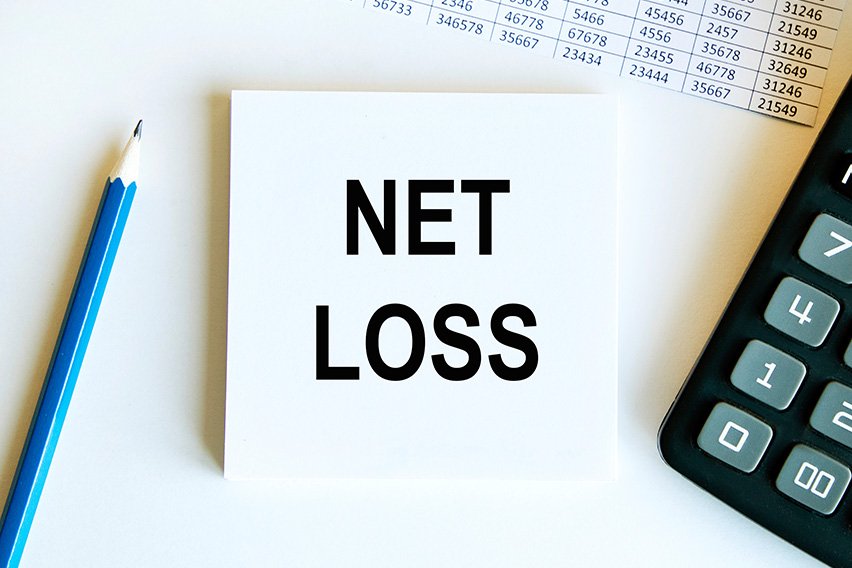Am I Insolvent? The Signs of Insolvency for Small Businesses

Insolvency is when a company or a person is either unable to pay the financial obligations due to poor income or cash flow or the value of the total debts exceed the value of the assets.
According to the IRS, “a taxpayer is insolvent when his or her total liabilities exceed his or her total assets.”
Unfortunately, operating an insolvent company can lead to accusations of wrongful trading and even lead to personal liability for the company debts.
What this article covers:
- What Does Insolvent Mean?
- How Do You Know If a Business Is Insolvent?
- What Are the Signs of Insolvency?
- What Is Insolvent Liquidation?
- How to Claim Insolvency?

What Does Insolvent Mean?
If your liabilities outweigh your assets, you’re insolvent. This is a state of financial distress in which you’re unable to pay your bills.
To determine whether your business is insolvent or not, you first need to list all your debts including bank loans, credit card debts, etc. Then add up the value of your assets including property, stocks, savings accounts and more. Compare these two values. If your debts outweigh your assets, you’re in the red.
How Do You Know If a Business Is Insolvent?
There are two simple tests to check the insolvency of a company: cash flow and balance sheet test.
1. The Balance Sheet Test
For the balance sheet test, list all your company assets in one column and prospective and contingent liabilities in the other. If the value of the assets is less than the liabilities, you’re insolvent.
It is important to note that the balance sheet or asset test is based on the value of the assets in a normal sale process. For example, the value of a car or a truck is a “black book value” which is determined when the car or truck is sold off to a private dealer.
In certain cases, your cash flow might be insufficient to pay off the bills, but if you have assets to sell off, you’re not deemed insolvent.
2. The Cash Flow Test
A cash flow test checks whether the company can meet its financial obligations and is concerned with the current and future debts. For this, you need to map your working capital at a given time and compare it with forecasted sales and payments.
What Are the Signs of Insolvency?
Businesses suffering from insolvency display certain characteristics. Let’s take a look at some of these warning signs of business insolvency.
- Experiencing poor cash flow and ongoing losses
- Cannot cover the basic operating costs of the business
- Unable to pay your creditors on set terms
- Constantly receiving threats of legal action for unpaid bills
- Regularly borrowing money to pay creditors and staff wages
- Unable to pay the creditors despite the demand being made as a result of a court order
If you believe your business is insolvent or heading that way, it is important to pay attention to your creditors and find ways to cut their losses. Business owners can directly negotiate with the creditors to restructure the debts into manageable installments.
You should also seek advice from external accountants or insolvency experts to discuss the severity of the problem and the available options.

What Is Insolvent Liquidation?
Often insolvent companies are placed into liquidation. Insolvent liquidation is a liquidation process used to close down the affairs of an insolvent company. There are two forms of liquidation: compulsory liquidation and voluntary liquidation.
A Creditors’ Voluntary Liquidation (CVL) is the voluntary liquidation process of closing down the insolvent company. The assets of the company, if any, are sold off to pay the creditors of the company.
This process is initiated by the business owners and requires an insolvency practitioner to manage the process. This is in contrast to compulsory liquidation, which is initiated usually by a creditor through the courts.
My Company is Insolvent. What Do I Do?
If your business is insolvent, here’s what you need to do.
- Stop trading
- Minimize further borrowing
- Negotiate with creditors
- Deal with cash-flow challenges through prompt invoicing, debt recovery and other methods
- Check for financing options
- Improve the financial information system
- Appoint an administrator or liquidator
Business owners who are on the brink of insolvency can choose to save the company with financial options such as refinancing, restructuring the business or appointing an external administrator.
You can hire a turnaround specialist who will not only identify problem areas and provide business recovery solutions but also negotiate with the creditors.
If you suspect your company is on the brink of insolvency, it is vital to take immediate action and seek professional financial assistance as soon as possible.
RELATED ARTICLES

 Net Operating Loss (NOL): A Detailed Guide
Net Operating Loss (NOL): A Detailed Guide What Does Goodwill Mean in Accounting? The Essential Features
What Does Goodwill Mean in Accounting? The Essential Features What Can Be Depreciated in Business? Depreciation Decoded
What Can Be Depreciated in Business? Depreciation Decoded What Is Overhead Allocation for Small Businesses
What Is Overhead Allocation for Small Businesses Accounting Errors: What Is a Transposition Error
Accounting Errors: What Is a Transposition Error How Accounting Can Help Your Small Business Succeed | How-To Guide
How Accounting Can Help Your Small Business Succeed | How-To Guide